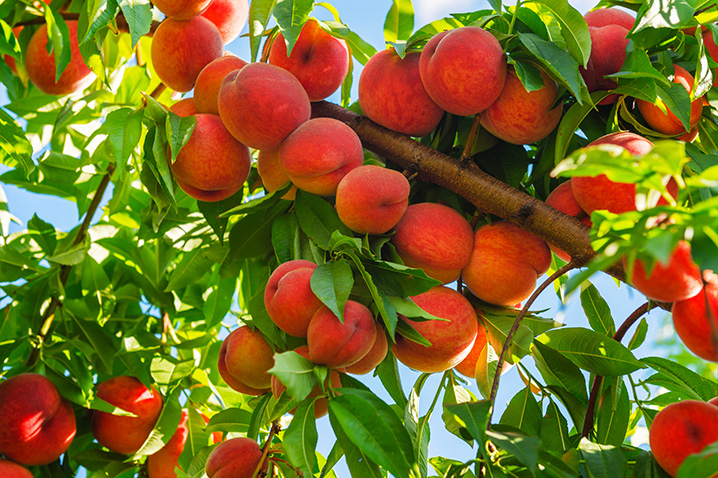By Justin Miller
This year, fruit growers are experiencing one of the warmest winters in more than 60 years. Most deciduous fruit trees, such as peach trees, adapt to winter cold and require a certain number of chill hours to produce a good harvest. As of Feb. 1, the Chilton Research and Extension Center in Clanton, Alabama, has logged 587 hours between 32 and 45° F. This is much less than the 10 year average of 799 hours, and the 59 year average of 997 hours.
Gary Gray, an Alabama Extension regional commercial horticulture agent, said that achieving needed chill hours is important for successful peach production. “Fruits have specific requirements for dormancy which occurs during the cooler temperatures of winter, between 32° and 45° F,” said Gray. “When varieties receive inadequate chilling, they may experience slowness to break dormancy, a long bloom period, slow leaf emergence and poor or varied fruit size development. This can be serious for fruit varieties with high chill requirements.”
The peach industry is a big part of Alabama’s economy. According to the U.S. Department of Agriculture, the peach industry in Alabama was a $6 million industry. Alabama produced over 5,000 tons of peaches in 2015.
Dr. Elina Coneva, an Alabama Extension commercial horticulture specialist, said that low chill hour numbers can have a big effect economically. “In a low-chill year, cultivars with higher chilling hour requirements may develop late and produce just a few flower buds,” said Coneva. “This leads to a poor crop and the fruit quality may be compromised by production of misshaped fruit. “Both quantity and quality of peaches can be severely affected by lack or insufficient chilling which leads to significant economic losses to the farmers.”
Doug Chapman, an Extension regional commercial horticulture agent based in north Alabama, said that Alabama has experienced weather like this before, and it had major effects across the state. “Alabama had unseasonably warm weather in the late winter and early spring of 2007. This caused everything to started growing early,” said Chapman. “Easter weekend, the temperatures dropped to the mid to upper teens and everything was damaged including pecans and muscadines which seldom get hurt.”
Gray said there are management strategies to consider when experiencing inadequate chilling. “Varieties of peaches and other fruits with lower chill requirements may not require special management this year. Producers should consider altering their management strategies for fruit varieties with high chill requirements.”
Gray suggested the following management strategies for high chill varieties that have inadequate chilling.
* Consider spraying rest breaking compounds.
* Prune as late as possible.
* Do not prune all of the short shoots on high chill varieties since these have lower chill requirement buds.
If flower buds on high chill varieties are not swelling or have aborted, do not prune until vegetative budbreak occurs to assure shoots for this year.
If flowers have good stigmas, add bees to orchard with or without pollen inserts to overcome poor pollen availability.
* Do not thin high chill (or marginally chilled) varieties until fruit have set and are growing (i.e., no bloom thinning). Thin fruit more carefully, over multiple occasions as fruit size differences become apparent.
To view the current chill hour accumulations around the state, visit Alabama Extension online athttp://www.aces.edu/dept/peaches/peachipm/mesonet/.
This article was submitted by the Alabama Cooperative Extension Service. More information can be found online at www.aces.edu.


